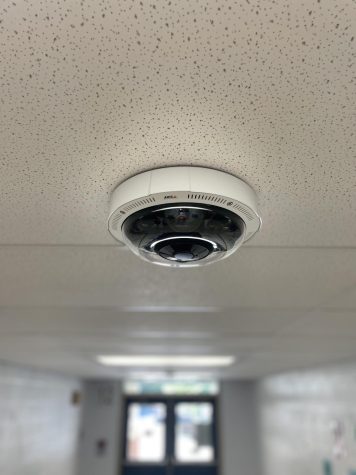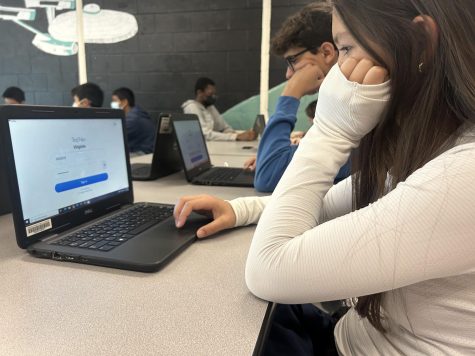Students and Staff Show Love of Learning on Personal Projects
Assistant Principal Kevin Sami learned to do household repairs using YouTube Videos.
One of the positivity project topics that stood out this year was Love of Learning, covered in April. Since learning is such an important concept for students, we decided to find out what different kinds of independent learning we could find among our students and staff, and the response was overwhelming.
One favorite activity, especially during covid, is learning how to solve a Rubik’s cube. According to 8th grader Phillip D., it only took him 45 minutes to figure it out the first time, but it was so rewarding he’s put many hours into it after that. He first learned it because he accidentally messed up his brother’s cube.
“My brother was gonna get angry, so I wanted to learn how to solve it,” Phillip said.
YouTube videos were his learning tool of choice. Phillip says that he likes knowing how to solve Rubick’s cubes because it’s enjoyable and rewarding since he’s the only one who knows how to do it.
Mr. Bradford also learned how to solve a cube on his own before sponsoring the Rubik’s Cube club at Longfellow (pre-covid). But another skill he’s picked up to some can be even harder, learning to juggle.
“I have juggled since my college days. It was a great way to take a study break and get my blood flowing. I still juggle sometimes when I want to take a break from grading papers or working on lesson plans at school.”
Bradford learned to juggle on his own by experimenting and practicing. He estimates he’s spent hundreds of hours learning and practicing, but most of it has been done in five or 10-minute breaks.
“It feels mostly like a form of personal meditation and focus exercise. It makes me happy to solve a cube and have all the colored pieces fall into place (returning order to the universe) and also to experience the fun of juggling – throwing and catching at a pace that is faster than comprehension. The thinking part of the brain almost has to shut down to let the juggling happen.”
Bradford still adds to his overall juggling knowledge by trying to juggle new and different objects (golf ball, tennis ball, football)
One popular area of self-teaching is home repair and remodeling. Both science teacher Desmond Reid and Assistant Principal Kevin Sami have honed their handyman skills over the years. Mr. Reid remodeled his whole kitchen.
“My wife and I bought a “fixer-upper” 2 years back and have done 80% of the work ourselves,” Sami said.
Money is a big motivator to learn these kinds of skills.
“It Has saved me lots of money,” said Mr. Reid. “Most jobs, material costs start at $500, and labor costs are about the same. And I have done many jobs.
Both Sami and Reid have expanded their building knowledge in other areas as well. Mr. Reid also builds computers, and Mr. Sami works on muscle cars, the old-fashioned kind.
Principal Dr. Jim Patrick has taken building one step further though and taken up woodworking.
“At first, I needed to build a table for a very specific part of my house. I couldn’t find one the right size, so I decided to build it. That got me started on other projects,” Dr. Patrick explained.
YouTube once again came to the rescue with lots of tutorials, but Dr. Patrick also learned from an experienced woodworker. He has built a kitchen table, a bench for his front porch, and some closet organization for his daughter’s room.
Students sometimes take the opportunity to learn on a daily basis for granted. These examples show just how rewarding it can be to continue that learning, build on skills, and tackle any problem or project that comes your way.







